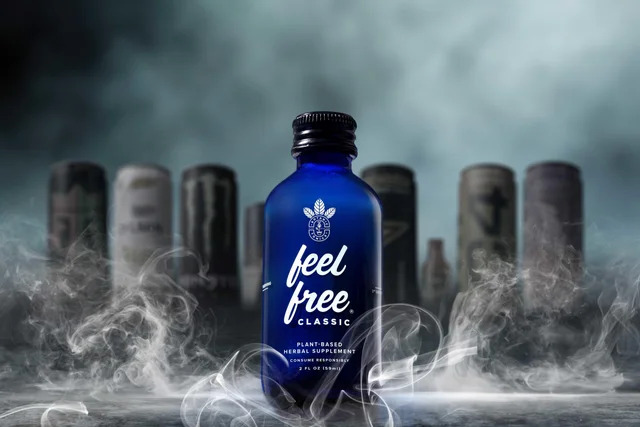Feel Free Classic Controversy: The Shocking Side Effects Consumers Must Know

In the wellness world, new products often arrive with grand promises—boosted energy, sharper focus, stress relief, and a better mood. One such product that has gained massive attention in recent years is Feel Free Classic, a plant-based tonic marketed as a natural alternative for energy and relaxation. But while its popularity has soared, so too has the controversy surrounding it. Consumers, health experts, and regulators are now asking tough questions: What is really in Feel Free Classic? And more importantly—what are the potential risks you need to know before taking it?
This article dives deep into the shocking side effects associated with Feel Free Classic, how it became a wellness trend, the controversy fueling debates, and why consumers should think twice before grabbing that stylish blue bottle.
The Rise of Feel Free Classic: From Niche Tonic to Mainstream Trend
When Feel Free Classic first hit the market, it was marketed as a “plant-based wellness tonic” designed to provide calm, focus, and social ease without alcohol. At a time when people were actively seeking healthier alternatives to drinking, the product found a perfect niche. With sleek branding, influencer endorsements, and trendy marketing, it quickly became a status symbol in wellness circles—something you could sip at a party or while working late at night.
The main appeal? Its ingredients: kava root and kratom leaf, both plants with a long history of use in certain cultures. Advocates praised the tonic for helping with anxiety relief, increased focus, and mild euphoria. It was positioned as something between coffee, alcohol, and a natural relaxant—an everyday enhancer for the modern lifestyle.
But as the tonic gained traction, reports of unexpected side effects began to emerge, raising serious concerns.
The Hidden Ingredients: What’s Really in Feel Free Classic?
To understand the controversy, we need to unpack the key ingredients:
Kava Root
- Traditionally used in the South Pacific for ceremonial relaxation.
- Known for calming effects and reducing social anxiety.
- Potential side effects: liver toxicity, drowsiness, and impaired motor function when consumed frequently or in high doses.
Kratom Leaf
- A tropical plant from Southeast Asia, often used for pain relief and energy.
- At low doses, it acts like a stimulant; at higher doses, it behaves more like an opioid.
- Potential side effects: addiction, nausea, constipation, liver injury, seizures, and withdrawal symptoms.
While both ingredients have cultural and medicinal roots, their combination in a commercial tonic raises serious safety questions. Unlike traditional uses (where preparation is carefully regulated), Feel Free Classic condenses and packages these powerful substances into a trendy product marketed for daily use.
The Shocking Side Effects Consumers Are Reporting
As sales of Feel Free Classic skyrocketed, so did the reports of unexpected side effects. While some users praise the tonic for giving them focus and energy, many others have faced troubling consequences.
Here are the most common—and alarming—side effects being reported:
Liver Damage
- Both kava and kratom have been linked to liver toxicity. Users have reported jaundice, abdominal pain, and fatigue after long-term use.
- Some doctors warn that regular consumption could lead to irreversible liver damage.
Addiction and Dependence
- Kratom, in particular, is highly addictive. Many users report building a tolerance quickly, leading to cravings and withdrawal symptoms similar to opioids.
- Symptoms of withdrawal include muscle aches, irritability, insomnia, and anxiety.
Mood Swings and Mental Health Issues
- While marketed as a mood enhancer, some users report increased anxiety, paranoia, and depression after prolonged use.
- The alternating stimulant and sedative effects of kratom can destabilize mental health.
Digestive Issues
- Nausea, constipation, and abdominal cramping are among the most frequent complaints.
Drowsiness and Impaired Function
- Some consumers have reported feeling dizzy, disoriented, or overly sedated, making activities like driving unsafe.
Seizures and Neurological Risks
- In rare but serious cases, kratom has been linked to seizures—especially in high doses or when combined with other substances.
Cardiovascular Concerns
- Elevated heart rate and increased blood pressure have been noted, raising risks for people with pre-existing heart conditions.
The Consumer Backlash: From Praise to Alarm
At first, Feel Free Classic was celebrated as a miracle alternative to alcohol and prescription drugs. Influencers posted glowing reviews, wellness bloggers touted its benefits, and trendy cafes even began offering it alongside kombucha.
But as reports of side effects surfaced, the narrative began to shift. Online forums, Reddit threads, and TikTok videos started documenting disturbing personal stories:
- A college student who became dependent on the tonic to study and later struggled with kratom withdrawal.
- A young professional who developed liver complications after daily use.
- A mother who tried it for stress relief but ended up in the ER with heart palpitations.
The shift from hype to caution has made Feel Free Classic one of the most hotly debated products in the wellness market.
Expert Warnings: What Doctors and Scientists Say
Medical professionals are increasingly sounding the alarm. Here’s what experts are pointing out:
- Lack of Regulation: Unlike pharmaceuticals, products like Feel Free Classic are not closely regulated by the FDA. This means consumers have no guarantee of purity, potency, or safety.
- Unstudied Combinations: While kava and kratom have been studied individually, their combined effects in concentrated tonic form remain largely unexplored.
- Risk of Misuse: The product’s casual marketing as an everyday beverage downplays the risks of addiction and toxicity.
Dr. Samantha Lee, a clinical toxicologist, summed it up:
“The danger lies not just in the ingredients themselves, but in how they are being packaged, promoted, and consumed without proper oversight. Consumers are essentially experimenting on themselves.”
Legal Controversy: Is a Crackdown Coming?
Given the mounting concerns, several U.S. states and countries are debating how to regulate or ban kratom-containing products. Some regions have already outlawed kratom due to its addictive potential, while others are pushing for stricter labeling and warnings.
The controversy raises critical questions:
- Should products like Feel Free Classic be sold alongside energy drinks and supplements?
- Should they require age restrictions or medical supervision?
- Or should they be banned outright, like other high-risk substances?
For now, the product remains widely available online and in specialty shops—but the pressure for regulation is growing.
The Psychological Trap: Why People Still Drink It
Despite the risks, many consumers remain loyal fans of Feel Free Classic. Why?
The Promise of Quick Relief
- Stress, anxiety, and burnout are at an all-time high. People crave instant fixes.
The “Natural” Label
- The word “plant-based” creates a false sense of safety, even when natural doesn’t mean harmless.
Social Media Influence
- Influencers glamorize the tonic, rarely mentioning potential downsides.
The Alcohol Alternative Appeal
- For those seeking a healthier option than alcohol, Feel Free Classic seems like the perfect solution—until side effects kick in.
Safer Alternatives to Consider
If you’re looking for stress relief, focus, or an alcohol alternative, there are safer, proven options to explore:
- Adaptogenic Herbs: Ashwagandha, Rhodiola, and holy basil have fewer risks and can help with stress management.
- Green Tea or Matcha: Provides focus and energy without severe side effects.
- Mindfulness Practices: Meditation, yoga, and breathwork can naturally reduce anxiety.
- Non-Alcoholic Beverages: Mocktails, herbal tonics, and kombucha offer social alternatives without risky plant alkaloids.
Final Thoughts: What Consumers Must Know
The Feel Free Classic controversy is more than a story about one product—it’s a cautionary tale about the wellness industry at large. In a market hungry for natural solutions, companies often push products with unproven safety records and downplayed risks.
Yes, some consumers may enjoy short-term benefits from Feel Free Classic. But the growing body of evidence suggests that these effects come at a cost—ranging from liver damage to addiction.
As a consumer, the shocking side effects cannot be ignored. Before trying the next trendy tonic, ask yourself:
- Is the relief worth the risk?
- Are there safer alternatives available?
- And do I really understand what I’m putting into my body?




